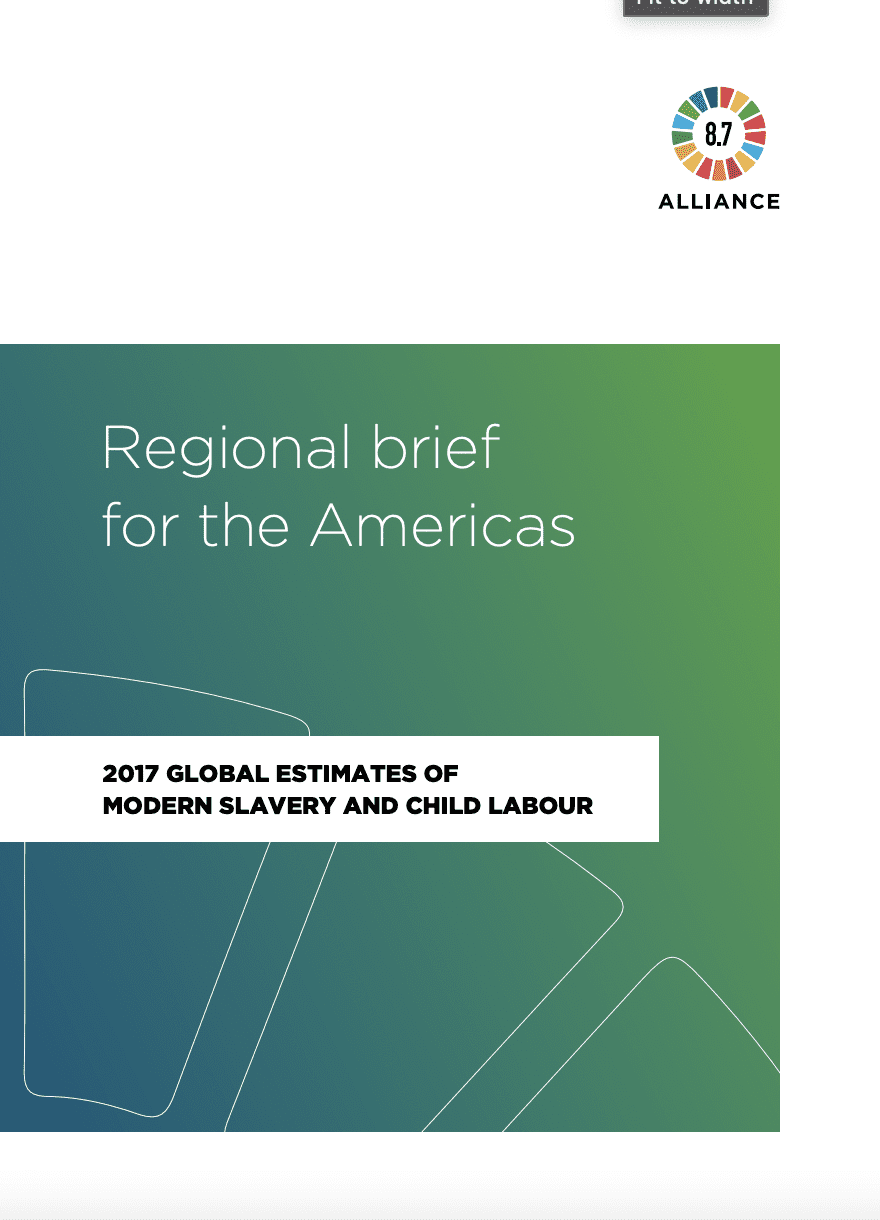
Regional Brief for the Americas, 2017 Global Estimates of Modern Slavery and Child Labour
Introduction
In 2015, world leaders adopted the 2030 Sustainable Development Goals (SDGs): 17 interrelated goals and 169 associated targets to guide global development. SDG Target 8.7 calls on governments to:
Take immediate and effective measures to eradicate forced labour, end modern slavery and human trafficking and secure the prohibition and elimination of the worst forms of child labour, including recruitment and use of child soldiers, and by 2025 end child labour in all its forms.
The 2016 Global Estimates of Child Labour and the 2016 Global Estimates of Modern Slavery chart how far we must still travel to honour these commitments. This brief summarises key results from the global estimates for the Americas region, which includes the countries of Latin America and the Caribbean (LAC), USA and Canada. It also addresses the main regional policy priorities on the road to the 2025 date for ending child labour and the 2030 date for eradicating modern slavery.
Child labour: main facts and challenges
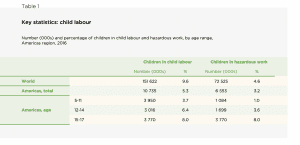
The global estimates for 2016 indicate that one in twenty of all children in the Americas region are involved in child labour, a proportion higher than in Europe and Central Asia and in Arab States (Fig. 1). About 3% of children in the region are in hazardous work. In absolute terms, 10.7 million Americas children are in child labour and 6.5 million are in hazardous work.
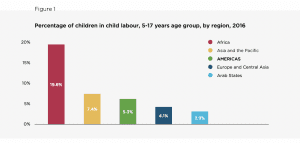
The estimates also highlight that: Progress against child labour was significant in Latin America and the Caribbean. Child labour went down in Latin America and the Caribbean (the regional grouping for which there are comparable estimates for 2012) over 2012 to 2016 period (Fig. 2), particularly due to targeted policies implemented by governments in the region to combat child labour. One of the most important advances in this regard has been the reduction of child labour in hazardous activities. It is likely that the advances were also driven in important part by broader economic and demographic forces acting in line with governmental efforts, although this is a matter requiring further research.

Agriculture predominates. Agriculture accounts for 52 per cent of all child labour and for 5.5 million children in absolute terms. Child labour in agriculture relates primarily to subsistence and commercial farming and livestock herding; most is unpaid and takes place within the family unit. Of the remaining children in child labour, 3.8 million (35 per cent) are found in the services sector and 1.4 million (13 per cent) are found in industry.
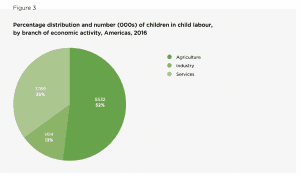
Young children form the largest group of those in child labour. The age breakdown of children in child labour indicate that 37 per cent of all those in child labour are in the 5–11 years age bracket, 28 per cent are aged 12–14 years and 35 per cent fall into the 15–17 years age range. This age profile of child labour in the Americas is older than elsewhere. Worldwide, for example, 5-11 year-olds constitute 48 per cent of all those in child labour. Hazardous work is more prevalent in the 15-17 age group (8.0 per cent of children in the relevant age cohort). This is the age group with higher participation in industry of children in child labour (20.7 per cent).
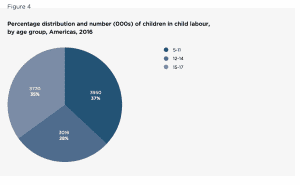
Read more here.
